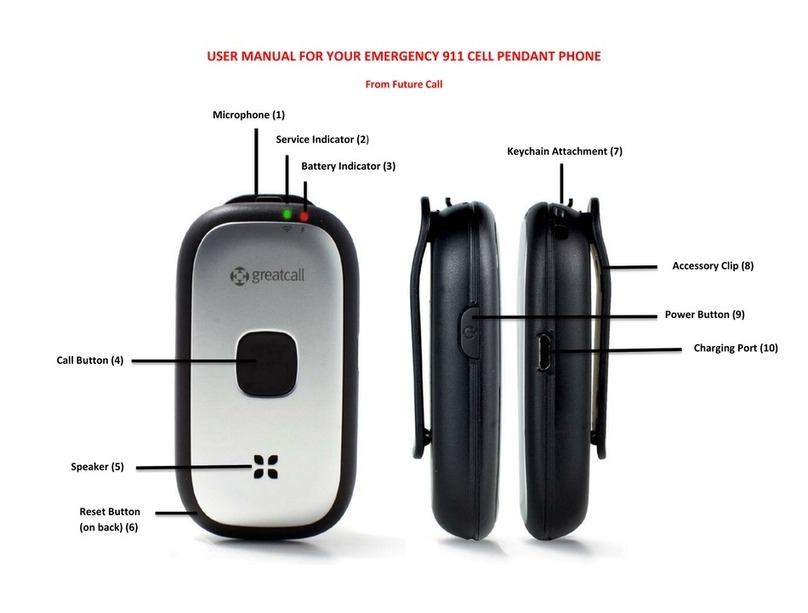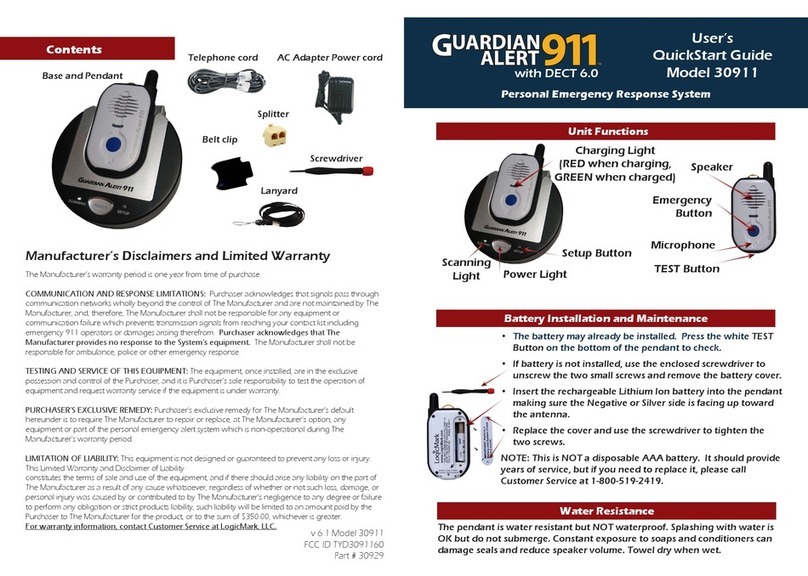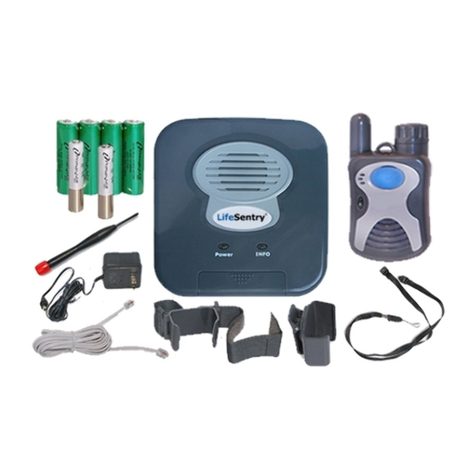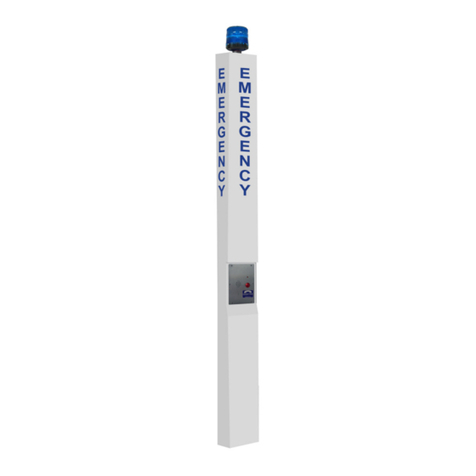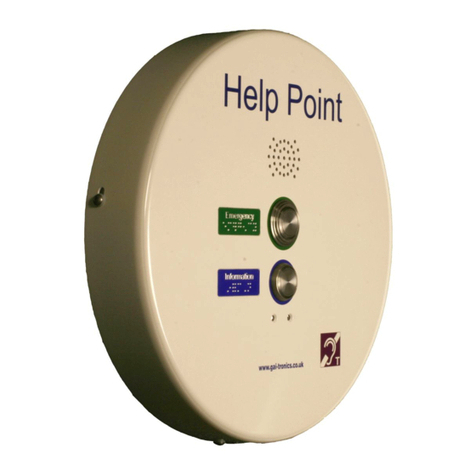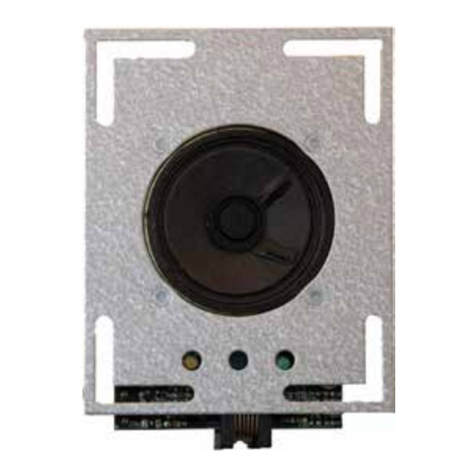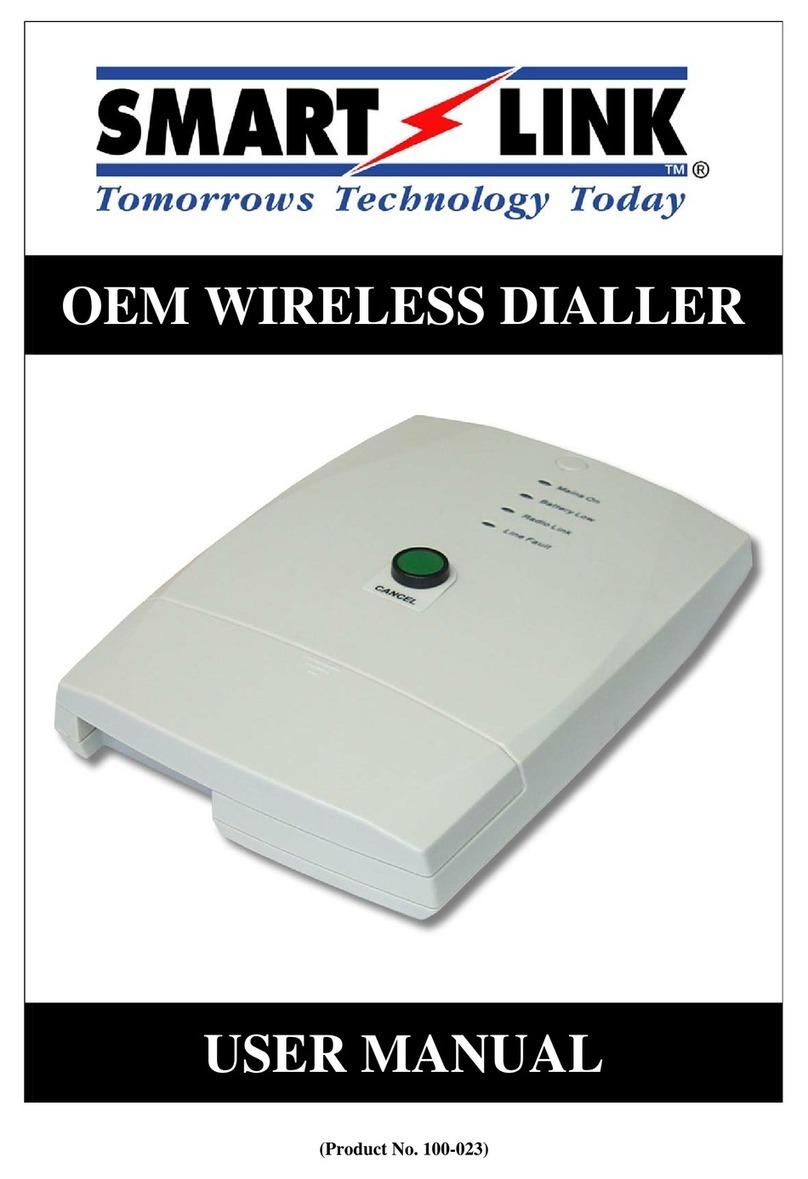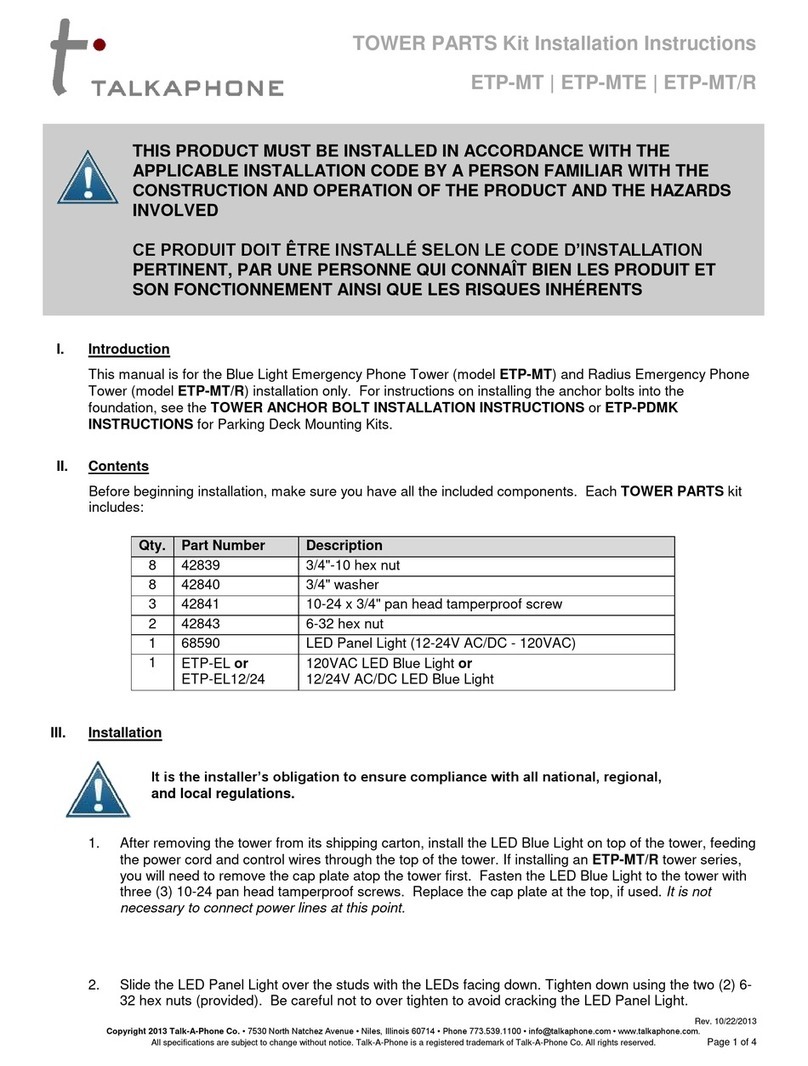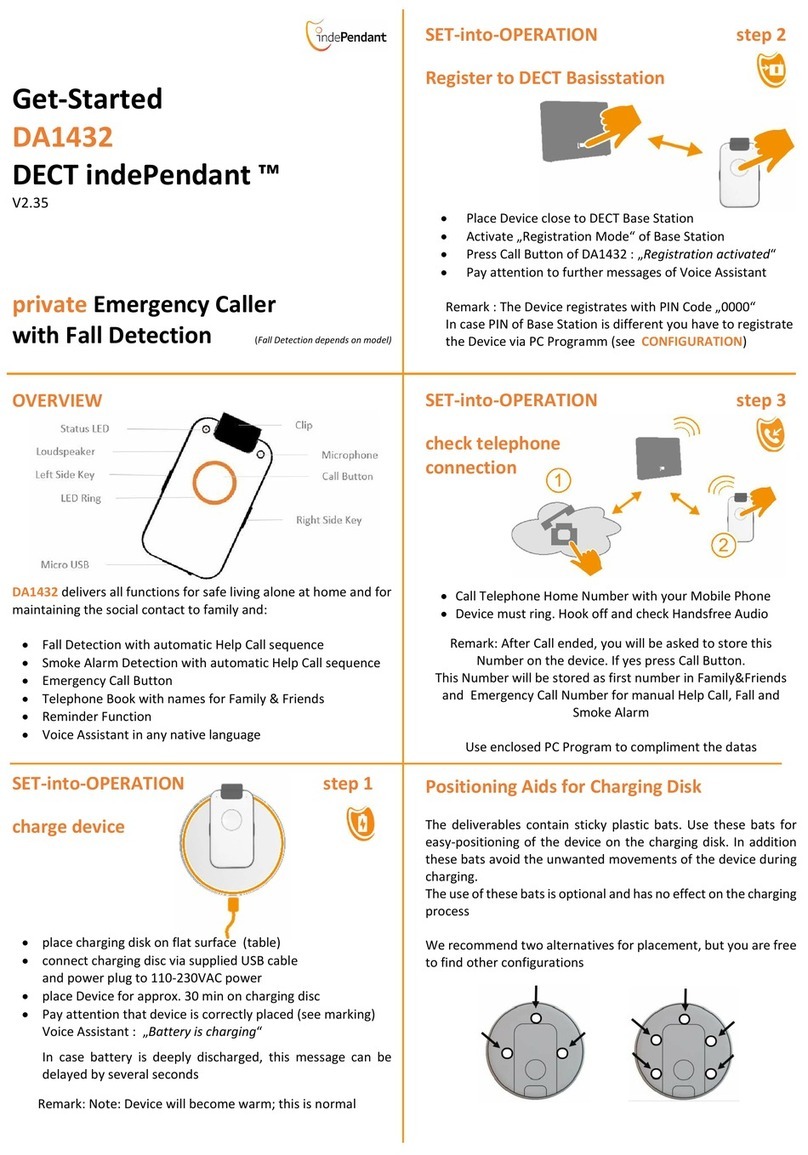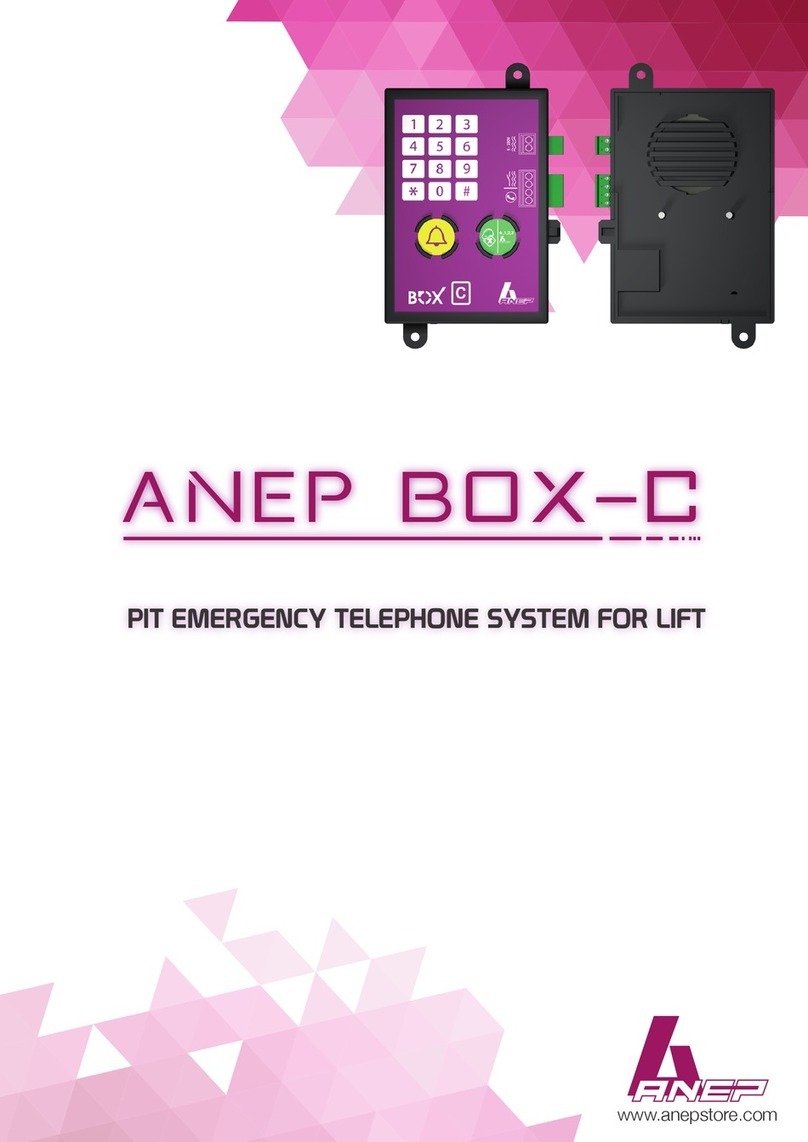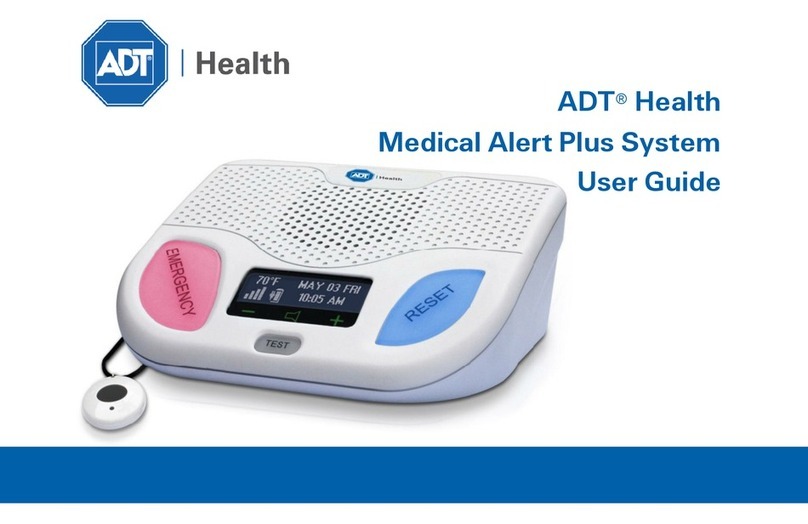
627
1.5 - calls towards standard phone numbers
(Without DTMFcommunication protocol)
1) T
2)
3)
4) After having taken the emergency call and listened to
5)
6)
7)
- when a new alarm cycle is triggered;
- by pressing the “*” key on the autodialler during the “Wait for call” status or during Stand-by;
- by pressing the “8” from a remote phone receiver (see § 1.8).
8) The autodialler exits from “Wait for call” status and gets back to Stand-by:
- after 3 minutes if “Incoming calls” is set on “OFF”;
- by pressing the “*” key on the autodialler;
- by pressing the “8” from a remote phone receiver (see § 1.8).
Notes:
- The alarm cycle is executed regardless from the availability of phone line. This is because different
line signals in some countries may prevent the alarm message to be sent.
- I
ETS8128CS.
Alarm cycle description for
The alarm cycle is common to all versions of the AMIGO telephone
In case of emergency, if a passenger in the lift car (or other person trapped in the lift installation)
pushes the alarm button of one of the alarm devices, the Emergency Telephone triggers the alarm
cycle and follows this sequence:
he Emergency Telephone connects to the phone line and dials the first stored number.
The "alarm sent" yellow LED switches on and after 6 seconds the "site identification " message is
played three times (if recorded and if the Messages option is activated; see § 3.11).
If the Emergency Telephone does not receive any answer for 60 seconds, it calls the second
stored number. In case of no answer, the next programmed number is called and so on. If all
programmed numbers are called without reply for the programmed number of times (see § 3.7),
the line is disconnected, the "alarm sent" LED stays on and the Emergency Telephone returns to
the stand-by mode, ready to start a new alarm cycle.
the "Site identification" message, the
external operator (Call Center or other rescue service) can establish the two-way conversation by
pressing the “0” key. If the operator hangs down the line or does not press the “0” key, the
Telephone dials the next number.
When conversation time expires (this parameter can be set by the customer, see § 3.10) the
Emergency Telephone sends 5 tones to the operator. If the operator presses the "*" key,
conversation time is extended; if the operator presses the "#" key the telephone disconnects the
telephone line, the yellow "alarm sent " LED switches off and the green "alarm received” LED
switches on. The message "Wait for call" will appear on the display.
When the Emergency Telephone is in "Wait for call" status (duration can be set by the client, see
§3.8), the external operator can connect to the site by dialing its phone number. When the
communication is established, the Telephone sends 5 tones; the same tones are passed to signal
that conversation time is about to end (conversation time can be extended by pressing the "*"
key). When the conversation is over, the Emergency Telephone returns to “Wait for call”.
The "alarm received" LED can be switched off:
- by pressing the "alarm off" button wired to the ALARM OFF input of the terminal board of the
autodialler (if the "alarm off" input is bridged the signal switches off automatically at the end of the
alarm cycle);
n the Quadriphony configuration (see §2.3), "alarm sent" and "alarm received" lights are placed in
the Car Slave Device
3.13 - Type of communication protocol
AMIGO Emergency Telephone can also dialogue with external service centers (Protocols currently
implemented: ANEP, ADEMCO, SCANTRONICS). In such cases, site identification and/or status of
installation data are automatically exchanged between the autodialler and the service center,
therefore there is no need to voice record the service messages (Site identification, Low battery and
Regular operation).
To set the “Protocol type” press WRITE to enter the programming mode and press:
- “0” to set “No protocol”
- “1” to set ”ANEP” protocol
- “2” to set “ADEMCO” protocol
- “3” to set “SCANTRONICS” protocol
then press OK to store the setting (If OK is not pressed within 30 seconds, the setting is cancelled and
the system goes back to Stand by).
Call delay
Protocol type
(Anep/Ademco/
Scantronics/No protocol)
NEXT WRITE
Stand by
DMG
Amigo XX vX.X
Anep
Ademco
Protocol type
ESC
0
1
OK
To store
ESC
Stand by
DMG
Amigo XX vX.X
NEXT
Call delay
Scantronics
No protocol
2
3
If no key is entered within 30 seconds, the autodialler will automatically get back to stand-by.
AMIGO
Emergency telephone
AMIGO
Emergency telephone
